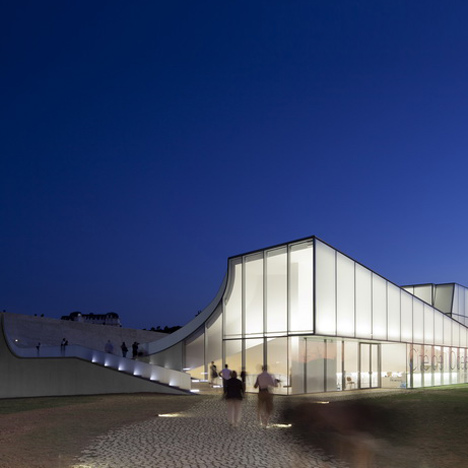
Kapilux by Okalux
Dezeen promotion: Kapilux glass, manufactured by German firm Okalux, contains capillary tubes to reduce glare and transmit light deep into a room. It was recently used on Steven Holl's Cité de l’Océan et du Surf in Biarritz, France.
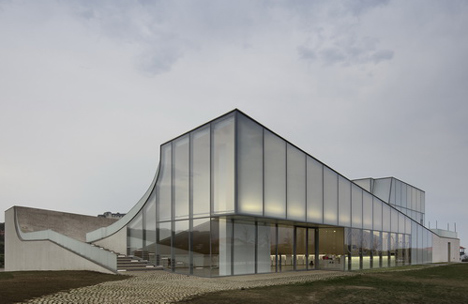
The translucent glass elevations of the wave-shaped museum were clad in Kapilux to provide insulation, protection from the sun and deep light penetration into the basement rooms.
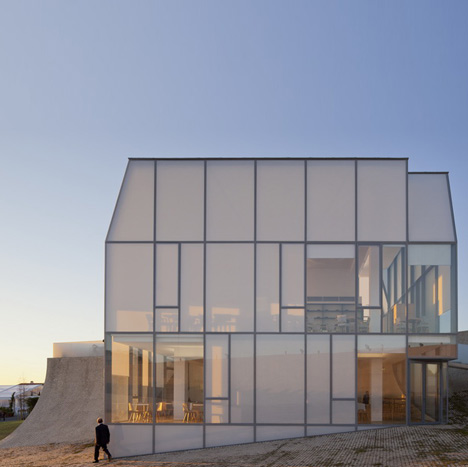
See more photos and information about the building in our earlier story.
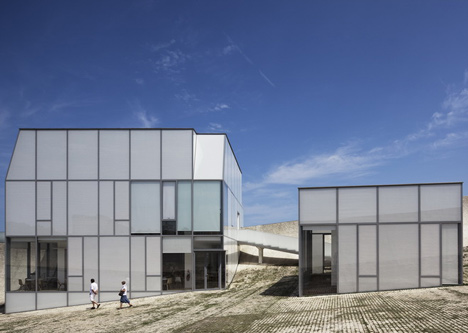
Photographs are by Fernando Guerra.
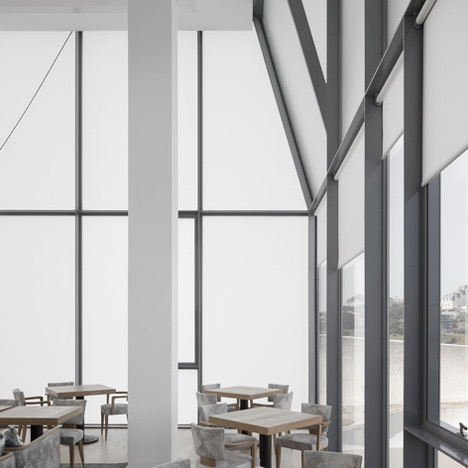
Here's some more information from Okalux:
Undulating Architecture
Museum of Oceanography and the History of Surfing in Biarritz designed by Steven Holl Architects using KAPILUX from OKALUX

The world-famous seaside resort Biarritz located on the Atlantic coast of France is one of the most popular destinations in Europe for surfing and windsurfing. Most of the coastal region is reserved for the sport; making it an ideal location to build an interactive museum dedicated to the biotope of the ocean and to the sport of surfing.
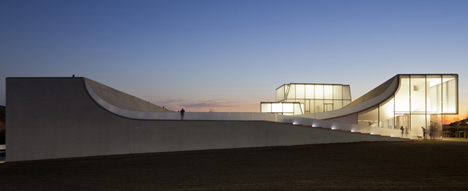
At first glance, the “Cité de l’Océan et du Surf” with its unconventional, dynamic design, appears to be a part of the landscape. Swerving ramps rise out of the ground like waves making the buildings seem to be one with the topography.
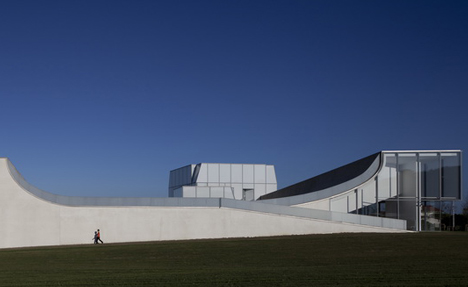
Glass cubes rest in this constructed landscape like boulders, underscoring the special character of the building design especially at nightfall.
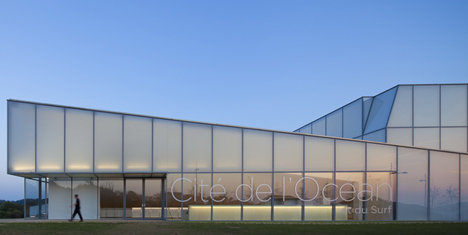
The interior of the new building offers space for various functions – museum, cultural centre, function room and restaurant. Scientific phenomena of the ocean are explained in the exhibition rooms while the skating pool with veranda and surf kiosk serve as a cultural meeting point for surfers and other water sports enthusiasts.
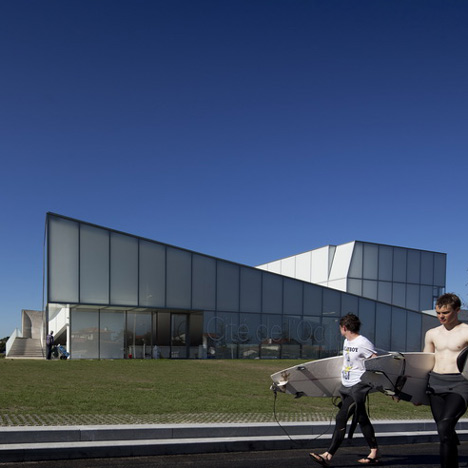
“Under the sky, under the sea” is how Steven Holl, who designed the museum in cooperation with Brazilian architect and artist Solange Fabião, describes his guiding idea for the spatial concept. The idea is to give the visitor the feeling of being beneath the surface of the water when inside the museum. To this extent, the convex cement ceiling was designed to give the impression of a large wave. This swerved design forms the character of the exhibition rooms on the lower floor which is connected to the entrance hall and the lobby through ramps, creating perceptible vitality in the interior of the building. On the exterior, the concave form describes a large arch: opening to the sky and the ocean, the generous roof seems to correspond with the waves breaking in the distance.
An exciting contrast to the soft line of the buildings is made by two glass cubes which break through the roof area. These cubes afford views to the in- and outside.
The translucent glazing and the transparent glass areas give light to the interior creating an open atmosphere. The translucent shell consists for the most part of glass with capillary slabs – KAPILUX from OKALUX, Marktheidenfeld.
The insulating glass diffuses the daylight deeply and evenly into the rooms, which, for the most part, are located underground, simultaneously offering very good sun and glare protection. These properties make it possible to reduce artificial lighting and heat input thus lowering the cooling load of the building.

Capillary glass used in buildings stands for energy efficiency and highest possible user comfort. The “Cité de l’Océan et du Surf” takes up the idea of sustainability in two ways: while it is the goal of the exhibition to create awareness for sustainable interaction with the ocean, the glazed façade sets an attractive and effective example for the respectful use of natural resources.
Project: Cité de l'Océan et du Surf, Biarritz / France
Client: SNC Biarritz Ocean / France
Architect:
Steven Holl Architects, New York / USA
with Solange Fabião, New York / USA
and Rüssli Architects, Luzern / CH
Glass: KAPILUX from OKALUX, Marktheidenfeld / Germany